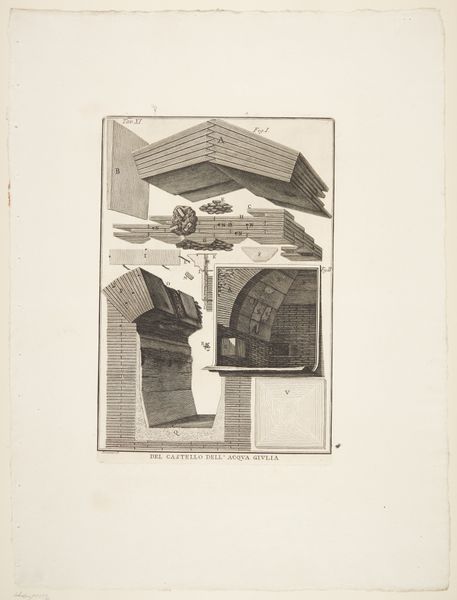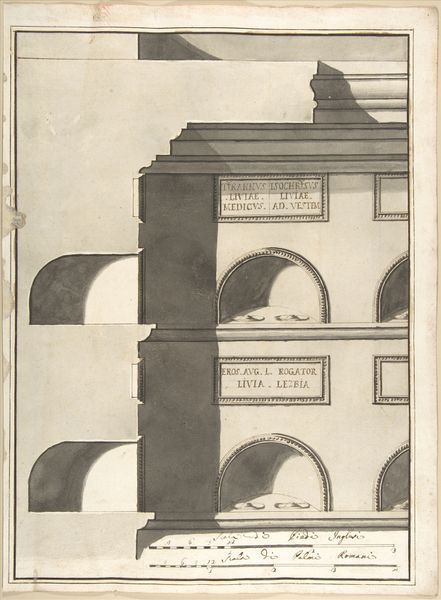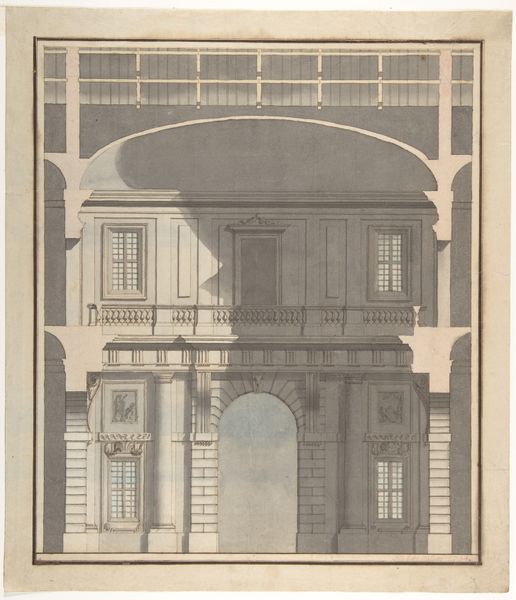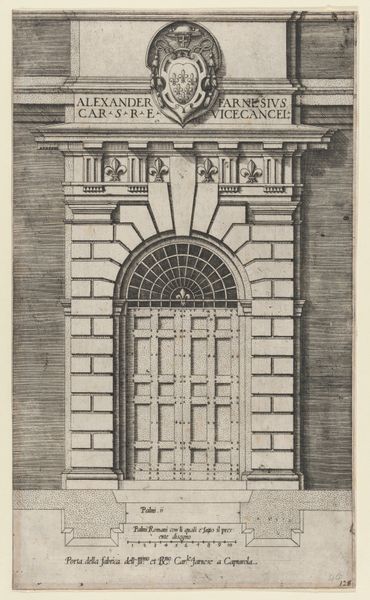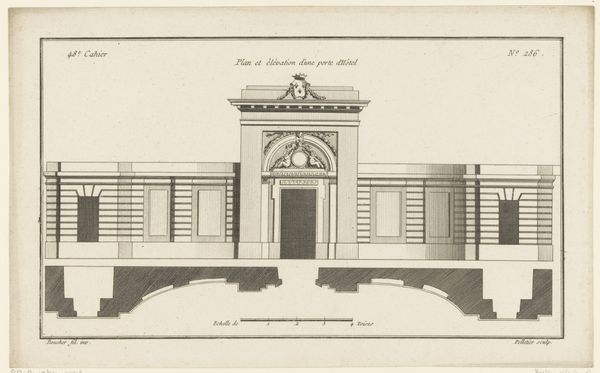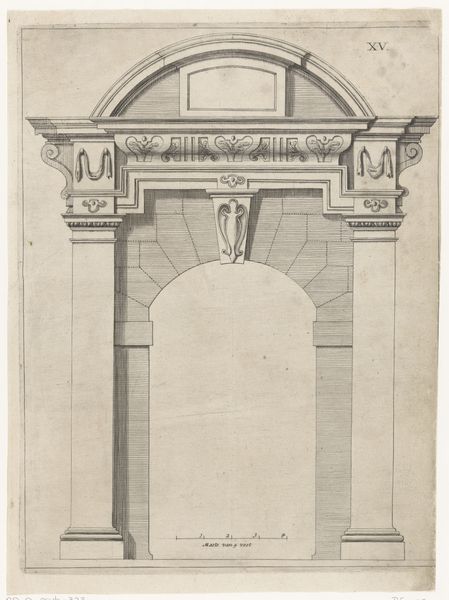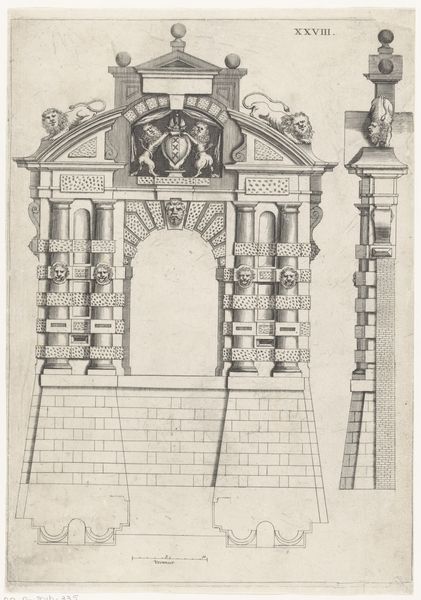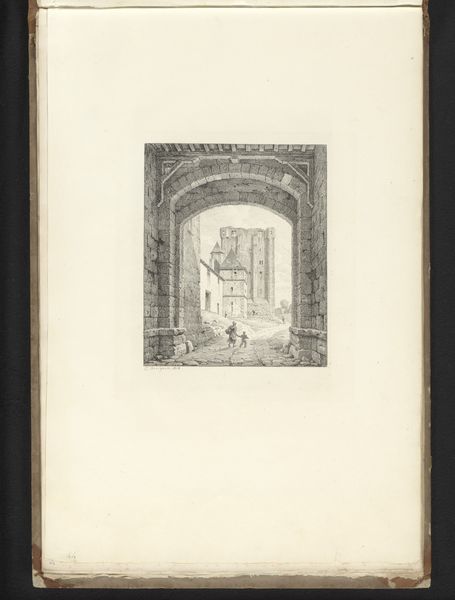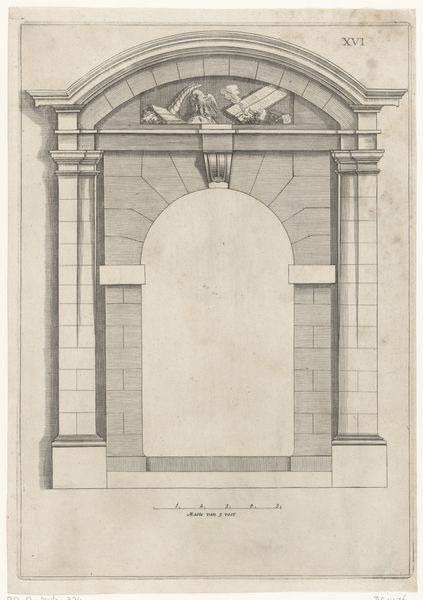
Forstudie til maleriet "Arrestbygningen ved Råd- og Domhuset" 1830
0:00
0:00
drawing, etching, paper, ink, pencil
#
drawing
#
narrative-art
#
etching
#
landscape
#
etching
#
perspective
#
paper
#
ink
#
romanticism
#
pencil
#
cityscape
#
academic-art
#
realism
Dimensions: 244 mm (height) x 219 mm (width) (bladmaal)
Curator: Martinus Rørbye’s preparatory study, “Forstudie til maleriet ‘Arrestbygningen ved Råd- og Domhuset,’” created around 1830, is rendered in ink, pencil, and etching on paper and currently resides in the collection of the SMK, the National Gallery of Denmark. Editor: Immediately, I’m struck by how much this perspective frames not just the building, but also a particular societal view of justice. It’s quite stark. Curator: Indeed. The precision of the etching work, especially in depicting the stone textures and architectural details, really highlights Rørbye's attention to the materials and methods used to construct power, both literally and figuratively in the era's justice system. Editor: And what of the figures? They appear dwarfed by the architecture, perhaps reflecting the limited agency of individuals within the judicial process of the time. I think the shadow work too evokes a sense of the oppressive reach of these institutions on everyday lives. Curator: Precisely! Notice how the ink and pencil are utilized, not to idealize or romanticize the setting, but to carefully and realistically render the surfaces, revealing a very constructed and controlled environment. This echoes larger social structures. The drawing depicts not just the building, but the raw labor and design that uphold it. Editor: It’s interesting that you note the 'constructed' environment as labor, because Rørbye completed this sketch at a time when institutions were still tools of oppression. This preparatory piece illustrates that the legal process and architecture are literally structured systems upholding particular power dynamics in 19th-century Denmark. Curator: Absolutely. Examining the artistic materials helps us appreciate that this image-making, and even the justice enacted there, depended on deliberate acts of material intervention and specific techniques. The choice of medium allows for detailed documentation of building elements. Editor: Placing this in context reveals much. This artwork encapsulates both the power of the institution and the fragility of individuals ensnared within its gears, thanks to his manipulation of depth. Curator: Agreed. Looking closer, we realize the significance of material reality, which goes beyond aesthetic qualities. Editor: Yes, Rørbye asks us to question not just the image, but the power dynamics and politics constructed in the social landscape.
Comments
No comments
Be the first to comment and join the conversation on the ultimate creative platform.
